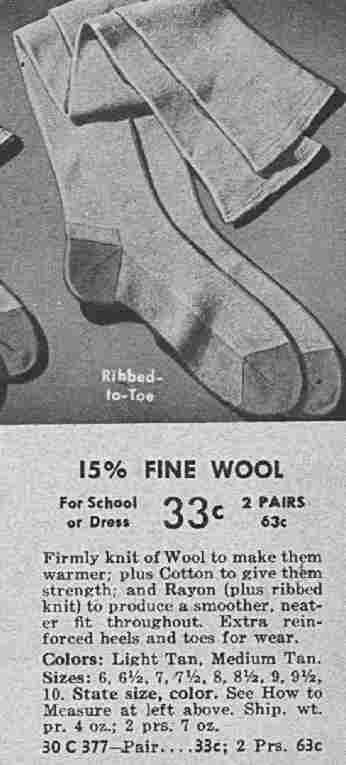
Figure 1.--Montgomery Wards in 1939 offered these stockings in a cotton, wool rayon blend. They were their most expensive line.


Figure 1.--Montgomery Wards in 1939 offered these stockings in a cotton, wool rayon blend. They were their most expensive line. |
Long stockings in the inter-war era were available in a number of fabrics and fabric blends. The primary material was cotton. Wool stockings were much more common in the early 1900s, but wool blends were still available in the 1920s and 30s. Long stockings were primarily availale in cotton, although one style has cotton with rayon outside. Mercerized cotton is used in some of the stockings. Mercerized cotton is cotton yarn or fabric treated with caustic alkali under tension, increasing strength, luster, and afinity for dyes. The process is named for its inventor, J. Mercer, who was an English calico manufacturer. He patented the process in 1850. The most common material that was used for boys stockings by the late 1930s was was known as "mercerized cotton" which was usually described in catalog adds as being reasonably durable and with care should stand up reasonably well to regular play activities.
For more formal "dress" occasions however, a more expensive "rayon"
covered mercerized cotton style was also sold for boys that outwardly
appeared somewhat silky or shiny ..thereby attempting to emulate the
look of silk. These being more expensive and less durable, were
usually reserved for more formal dress wear occasions. Starting in early 1942 many stocking advertisements began to state that most U.S. production of rayon and silk resources were being diverted to
the war effort until further notice.
Some major changes in the fabric used for lonf stockings were repoted in the inter-war era.
The popularity of woolmstockings declined in the 1920s and were generally replaced with cotton stockings.
Manufacturers began used rayon in the 1930s to make better looking and fiting stockings. There were also some blended fabrics with wool. Most stockings, however, were made with cotton.
Starting in early 1942 many stocking advertisements began to state that most U.S. production of rayon and silk resources were being diverted to
the war effort until further notice. Rayon and silk was needed in particular for parachutes. As the Japanese cut off America from the major supplier of silkn (China), rayon was badky needed. During the next 4 years (1942-45), both women and children reverted back to having only cotton based stocking products available. Had World War II not had this diversionary effect, it would have more than likely led to more in the way of rayon/silk dress stocking options for boys.
Long stockings in the inter-war era were available in a number of fabrics and fabric blends. The primary material was cotton. The cotton or earlier wool stockings were for ordinary wear.
Wool stockings were much more common in the early 1900s. This was primarily because wearing stockings for warm was a major reasion for wearing them. I'm not sure how available cotton stockings were or their relative price in the early 1900s. By the 1920s, however, cotton stockings generally replaced the wool ones. Some blended fabrics were available with wool in the 1920s-40s, but cotton was the principal fabric. HBC is not sure at this time just why cotton replaced wool.
Long stockings were primarily availale in cotton, although one style has cotton with rayon outside. Mercerized cotton is used in some of the stockings. Mercerized cotton is cotton yarn or fabric treated with caustic alkali under tension, increasing strength, luster, and afinity for dyes. The process is named for its inventor, J. Mercer, who was an English calico manufacturer. He patented the process in 1850. The most common material that was used for boys stockings by the late 1930s was was known as "mercerized cotton" which was usually described in catalog adds as being reasonably durable and with care should stand up reasonably well to regular play activities.
For more formal "dress" occasions however, a more expensive "rayon"
covered mercerized cotton style was also sold for boys that outwardly
appeared somewhat silky or shiny, thereby attempting to emulate the
look of silk. These being more expensive and less durable, were usually reserved for more formal dress wear occasions. An HBC contributor reports a conversation with someone who wore long stockings as a boy. He confirms that the rayon covered ones were for dress occasions.
HBC has not noted silk stockings for children in the mail order catalogs. It is likely, however, that such stockings were available from better department stores.
The fabric used in the stockings had some impact on how they were worn. Wool of course was the warmest material, but could be uncomfortable and scrathey in heated homes or school rooms. They also were more expensive--an important factor for many mothers. As a result, less expensive cotton stockings often proved a best all around choice and offered a neater more trim fit that looked beter. For formal occasions mothers might choose a blended fabric with silk or rayon that gave the stockings a luxurious luster. The cotton-rayon-wool stiockings were considered suitable for both dressy wear and school.
Related Pages:
[Return to the Main U.S. inter-war stockings page]
[Knee socks]
[White knee socks]
[Long stockings]
[Striped socks]
[White stockings]
[Tights]
Navigate the Historic Boys' Clothing Web Site:
[Introduction]
[Activities]
[Bibliographies]
[Biographies]
[Chronologies]
[Countries]
[Contributions]
[FAQs]
[Links]
[Style Index]
[Boys' Clothing Home]
